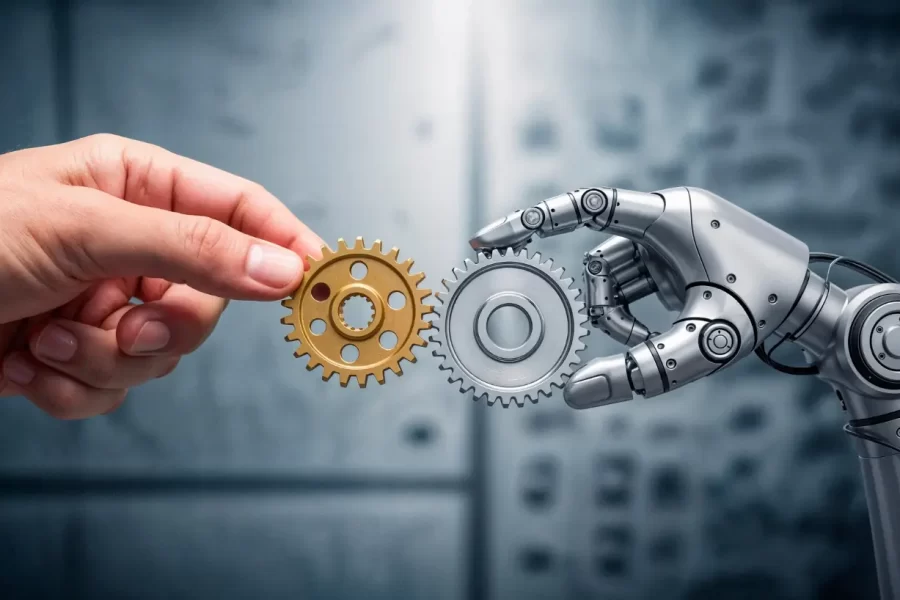
Today, the world of manufacturing has reached a level of speed and efficiency that was unimaginable in the past. One of the biggest forces behind this is, without a doubt, industrial robot technology. The fact that more and more factories and production facilities are turning to robots highlights the importance of developments in this field. So, what is an industrial robot, what does it do, and what role does it play in manufacturing? Let’s take a detailed look at the answers to these questions together.
What Does Industrial Robotics Mean?
Industrial robotics is the use of robot systems in manufacturing that operate automatically without human intervention, are programmable, and have versatile functions. These robots can work in many different sectors, from heavy industry to electronics assembly. These systems, which have revolutionized industrial automation, prioritize factors such as speed, precision, and repeatability in production processes.
Fundamentally, robot technology aims to develop systems that can perform even complex operations independently of humans. This reduces the need for human labor, lowers production costs, and establishes a flawless chain of operations. In other words, robotic machines become the indispensable helpers of factories.
In Which Manufacturing Processes Are Robotic Systems Used?
Today, robotic systems can play an active role in almost every stage of the production process. These systems are particularly common in sectors such as automotive, electronics, food, pharmaceuticals, and heavy industry. Tasks such as assembling product parts, welding, painting, or packaging on an assembly line are now entrusted to robots.
For example, imagine a robotic arm that welds or paints the frame of every vehicle in a car factory. This robot can perform the same operation all day long, with the same precision and without a millimeter of deviation. This increases the standard in production and also significantly improves occupational safety. In short, the use of robots in production minimizes human error and saves time.
What Are the Types of Industrial Robots?
Industrial robots are divided into many different types. Each is specially designed for different tasks. The most well-known robot types include:
- Articulated Robots: Their arm structure resembles a human arm. They are ideal for tasks such as assembly, welding, and painting.
- SCARA Robots (Selective Compliance Assembly Robot Arm): They have fast and precise movement capabilities. They are generally used in assembly and handling operations.
- Delta Robots: They are preferred for lightweight tasks that require high speed. They are common in the food industry.
- Cartesian Robots: They move linearly on the X, Y, and Z axes. They are frequently used in CNC machines.
- Collaborative Robots (cobots): These are robots that can work safely in the same environment as humans.
This diversity makes it possible to develop a robotic system suitable for every production line and need. This allows companies to make their production lines more flexible and efficient.
How Do Industrial Robots Increase Manufacturing Efficiency?
Production efficiency plays a big role in the success of a business. This is exactly where industrial robots come into play. Unlike humans, robots do not get tired, do not take breaks, and can perform the same job repeatedly with the same speed and precision. This provides a great advantage, especially in mass production.
For example, if a product needs to be produced 1000 times with the same quality, production robots can complete this process flawlessly and in a short time. When people try to do the same job, both time is lost and quality can fluctuate. Thanks to industrial automation systems, businesses can produce more, reduce the error rate, and prevent labor loss.
In addition, in dangerous environments or areas where work must be done at high temperatures, robotic machines can perform their duties without risking human lives. This is an important gain in terms of both occupational safety and sustainability.
What Is the Difference Between Robots and Traditional Machines?
Traditional machines are generally designed to perform a specific function. These machines cannot be programmed or easily adapted for different jobs. However, industrial robots have a much more flexible structure. Since they are programmable, they can be used for different tasks. This reduces cost and time loss when the production line needs to be changed.
For example, a traditional drill only drills holes; but an arm equipped with robot technology can drill holes, place parts, and perform quality control. Thanks to this versatility, robots offer a solution not just for one job, but for the entire production line.
In addition, thanks to advanced sensors and artificial intelligence algorithms, robots can perceive the environment and react to unexpected situations. In this respect, robotic systems offer a much more intelligent and adaptable structure than classical machines. In short, robots are not just systems that do work, but also systems that can make decisions.
The answer to the question “what is an industrial robot” is not just a technical explanation. These robots are systems that fundamentally change our understanding of modern manufacturing and provide businesses with speed, quality, and competitive power. It is no longer possible not to talk about robots when it comes to production efficiency. Thanks to automation systems, labor is used more efficiently, costs are reduced, and quality standards are increased. At the point we have reached today, robot technology has become the language of today’s, not tomorrow’s, manufacturing.
